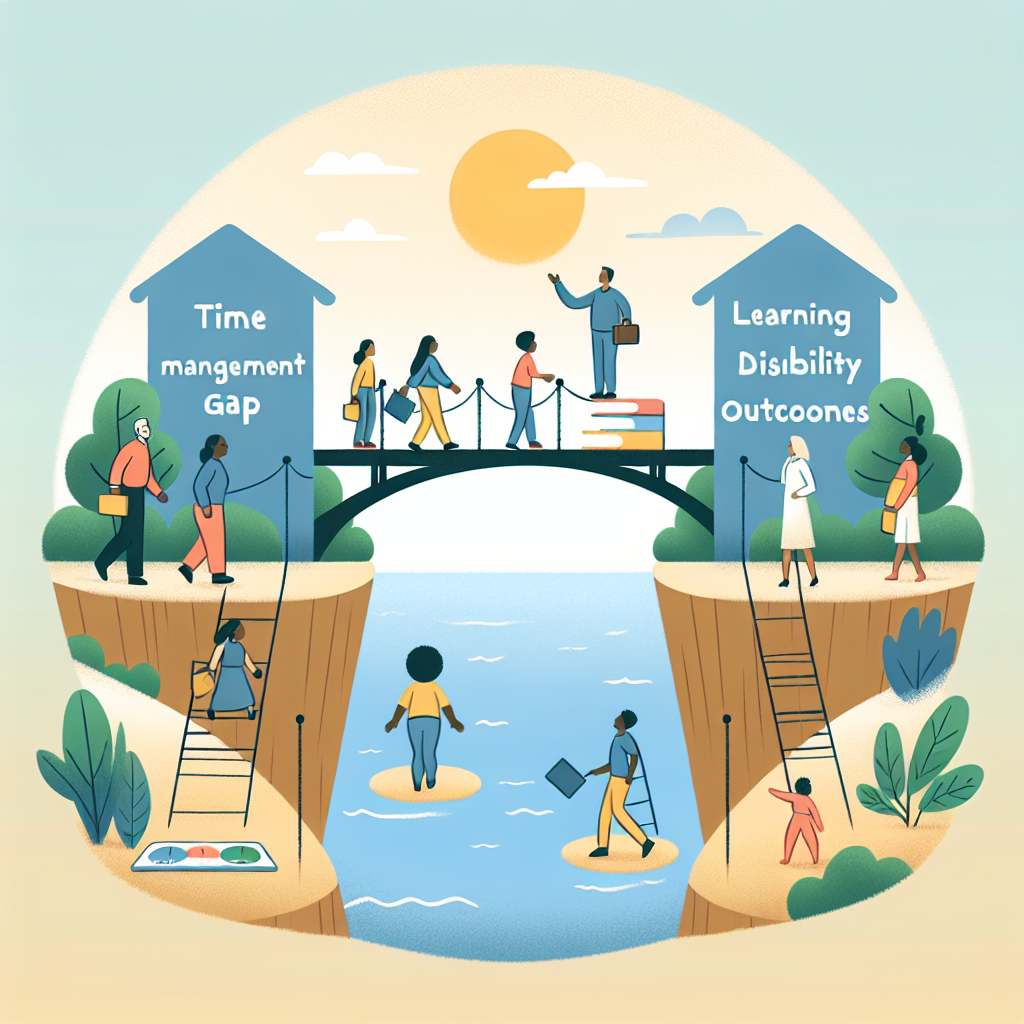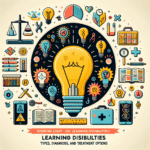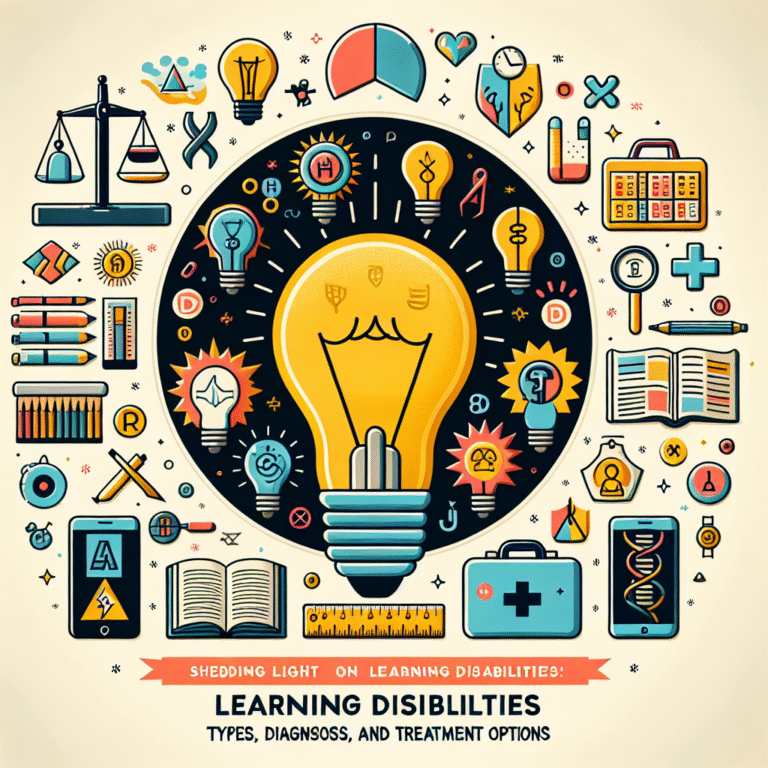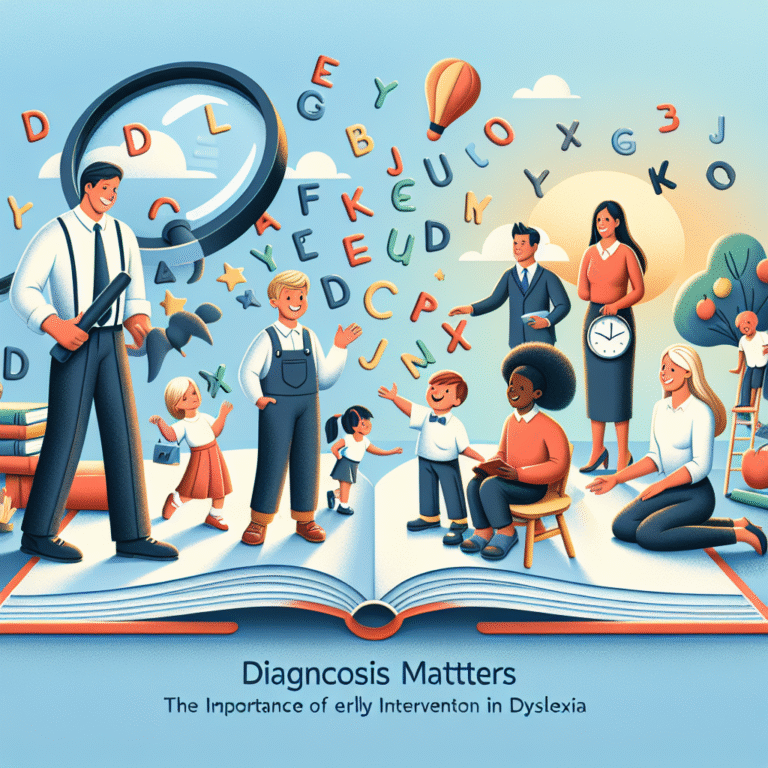
Bridging the Gap: How Time Management Affects Learning Disability Outcomes
Introduction: The Importance of Time Management for Learning Success
Imagine a world where every student, regardless of their learning challenges, thrives academically. This vision is not just a dream; it can be a reality if we focus on Bridging the Gap: How Time Management Affects Learning Disability Outcomes. Effective time management can transform educational experiences, allowing individuals with learning disabilities to achieve their fullest potential.
In the hustle and bustle of modern education, time is often seen as both a limitation and a resource. For students with learning disabilities, this dichotomy can significantly impact their educational outcomes. How can we harness time management techniques to improve learning experiences for these individuals?
In this article, we’ll explore the intricate relationship between time management and learning disabilities, supported by real-world case studies, expert insights, and actionable strategies. By understanding Bridging the Gap: How Time Management Affects Learning Disability Outcomes, we will uncover the keys to fostering a nurturing environment for all learners.
Understanding Learning Disabilities
What are Learning Disabilities?
Learning disabilities encompass a range of neurological conditions that affect the brain’s ability to receive, process, or communicate information. These disabilities can significantly impact academic performance, affecting skills such as reading, writing, and mathematics.
Common types of learning disabilities include:
- Dyslexia: Difficulty in reading and processing language.
- Dyscalculia: Challenges with numbers and math concepts.
- Dysgraphia: Issues with writing and fine motor skills.
For students with learning disabilities, traditional teaching methods may not be effective. This is where time management can play a crucial role in creating tailored learning experiences that cater to individual needs.
The Importance of Time Management
Time management is the process of planning and exercising conscious control over the amount of time spent on specific activities. For students with learning disabilities, effective time management can result in:
- Improved focus and concentration.
- Enhanced academic performance.
- Reduced stress and anxiety levels.
Research shows that students who employ time management techniques are more likely to demonstrate better learning outcomes. This brings us back to our theme—Bridging the Gap: How Time Management Affects Learning Disability Outcomes.
The Connection Between Time Management and Learning Disabilities
The Impact of Poor Time Management
Students with learning disabilities often struggle with organization and prioritization. Without effective time management strategies, they may experience:
- Procrastination and missed deadlines.
- Poor retention of information.
- Increased feelings of overwhelm and frustration.
To understand this, let’s look at some relevant statistics:
| Study | Finding |
|---|---|
| National Center for Learning Disabilities (NCLD) | Approximately 1 in 5 children has learning difficulties. |
| Research Journal of Education | Students with poor time management skills have lower academic performance levels by up to 30%. |
As shown, the consequences of poor time management can be profound. This emphasizes the need for effective strategies to enhance academic outcomes.
The Role of Time Management Strategies
Implementing targeted time management strategies can greatly benefit students with learning disabilities. Here’s how:
- Prioritization of Tasks: Teaching students to prioritize tasks helps them focus on what’s most important, leading to a sense of achievement.
- Setting Realistic Goals: SMART (Specific, Measurable, Achievable, Relevant, Time-bound) goals guide students in capturing focused outcomes within a set timeframe.
- Creating Structured Routines: A predictable schedule helps minimize anxiety and promotes a conducive learning environment.
Case Studies: Real-world Applications of Time Management
Case Study 1: Chris’s Journey with Dyslexia
Chris, a 12-year-old diagnosed with dyslexia, struggled with reading comprehension and often felt discouraged in school. His parents decided to implement time management techniques to help him.
Strategy Used: Break assignments into manageable tasks.
Outcome: By dividing reading assignments into shorter segments, Chris found it easier to absorb the material. His reading scores improved significantly, and he felt more confident in his abilities.
Analysis
Chris’s experience reflects the importance of breaking tasks down into manageable parts, a key component of effective time management. By utilizing techniques tailored to his learning disability, he was able to thrive academically.
Case Study 2: Sara’s Experience with Dysgraphia
Sara, an 8-year-old with dysgraphia, had difficulties with writing assignments. Her educator introduced the concept of using digital tools to manage her writing tasks.
Strategy Used: Utilize typing programs to replace handwriting.
Outcome: Sara excelled in expressing her ideas without the frustration of handwriting challenges. This not only improved her writing skills but also her overall academic performance.
Analysis
This case illustrates the suitability of alternative methods to accommodate specific learning needs. Digital tools fell in line with time management principles, showcasing effective strategies for students with disabilities.
Effective Time Management Techniques for Students with Learning Disabilities
1. Visual Timers and Planning Tools
Visual timers can help students grasp the concept of time more effectively, enabling them to allocate their time wisely. Planning tools, such as calendars and planners, support organization.
Example Tools:
- Google Calendar: Use for setting reminders about assignments and deadlines.
- Pomodoro Technique: Work in focused intervals (e.g., 25 minutes) followed by short breaks.
2. Goal-Setting
Encouraging students to set personal academic goals can enhance their motivation. They can reflect on their achievements and adjust strategies as needed.
| Goal Type | Example |
|---|---|
| Academic | Complete a chapter by the end of the week. |
| Personal | Spend 10 minutes a day on reading practice. |
3. Regular Check-Ins
Scheduled check-ins with educators or mentors can provide accountability and support. This can involve discussing progress, challenges, and potential adjustments to time management strategies.
Challenges in Implementing Time Management Techniques
Despite the advantages of time management, various challenges can arise:
- Resistance to Change: Students may resist new strategies out of frustration or lack of motivation.
- Lack of Training: Educators may not be equipped with the knowledge or tools needed to implement effective time management techniques.
Solution: Professional development workshops can equip educators with essential strategies to support students better.
Conclusion: The Path Forward
As we’ve explored, Bridging the Gap: How Time Management Affects Learning Disability Outcomes isn’t just a theoretical concept—it’s a practical approach that can make a real difference in the lives of students with learning disabilities. By implementing effective time management strategies, we can help transform educational experiences, fostering environment where every student can thrive.
Time management is not just about keeping schedules; it’s about empowering individuals to take control of their learning journeys. We must commit to nurturing these techniques for the benefit of all students, ensuring that learning disabilities do not impede success.
FAQs
1. What are learning disabilities?
Learning disabilities are neurological disorders that affect the brain’s ability to receive, process, or communicate information.
2. How does poor time management impact students with learning disabilities?
Poor time management can lead to procrastination, missed deadlines, and increased anxiety, impacting overall academic performance.
3. What are some effective time management strategies?
Effective strategies include breaking tasks into smaller parts, setting SMART goals, and using visual planning tools.
4. How can educators support students with learning disabilities in managing time?
Educators can assist by providing structure, modeling time management techniques, and offering regular check-ins for progress monitoring.
5. Are there specific tools to help with time management for students with learning disabilities?
Yes, tools like visual timers, planners, and digital organizing apps like Google Calendar can greatly aid in time management.
In conclusion, effectively bridging the gap through strategic time management not only enhances learning outcomes but also fosters self-confidence and independence in students with learning disabilities. The journey may require patience and dedication, but the rewards are invaluable!









